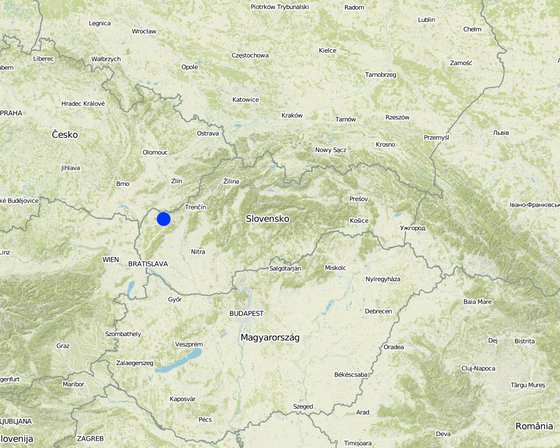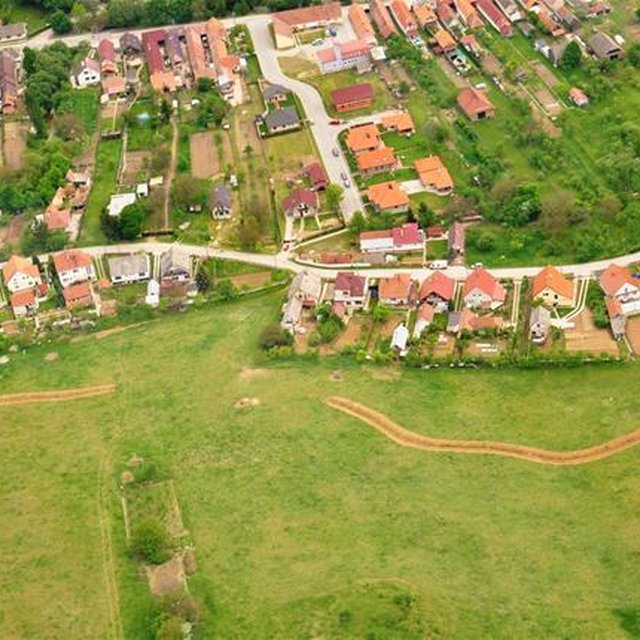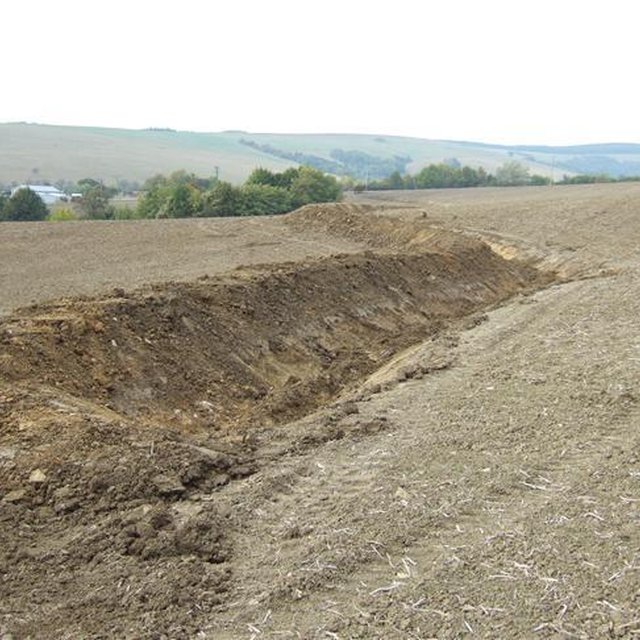



The structural measures are characterized as small technical structures to control and slow down surface runoff, created after extreme rainfall. The ditch is digged across the slope (along the contour) according to the terrain. Along the four of dithes there were also vegetative strips that should protect and retain rainfall.
Purpose of the Technology: Some damage has been observed on the farmland during storm rainfalls, long-lasting rainfalls, and periods of melting snow. The aim of the conservation measures is to eliminate hazards and damage to health and the economy, to improve the accumulation and infiltration of water into the soil, and to retard the surface runoff on the farmland.
Establishment / maintenance activities and inputs: There are 7 ditches in the area (2842 m in total/ 23873 m3). In the locality of Padelky there are level ditches with lengths of 160 m + 320 m+ 830m = 1310 m; in the locality of Kubíny there are level ditches with lengths of 500 m + 100 m + 175 m = 775 m; in the locality of Šlachovec there is one ditch with the length of 750 m. The total water retention volume is 23873 m3. The ditches are in the shape of a trapezoid with a base width of 1 m, a height according to the terrain, and a slope of 1:1.5 while the digged soil is moved to the lower part of the ditch.
Natural / human environment: Sobotište is a village in the Teplica river basin; it is situated near the town of Senica in the Trnava region of western Slovakia. It is located in a valley at the foothills of the White Carpathians, which are part of the Carpathian Flysch Belt. The sedimentary flysh rocks are erodible, disintegrable, and sensitive to erosion.

Location: Sobotište, Slovakia, Slovakia
No. of Technology sites analysed:
Spread of the Technology:
In a permanently protected area?:
Date of implementation:
Type of introduction





| Specify input | Unit | Quantity | Costs per Unit (Eur) | Total costs per input (Eur) | % of costs borne by land users |
| Labour | |||||
| Digging of the ditch for 600 mm width | m3 | 9.9 | 18.14 | 179.59 | |
| Adjustment of the ditch´s embankment | m2 | 3861.0 | 0.82 | 3166.02 | |
| Digging of the ditch for 600-2000 mm width | m2 | 5253.0 | 10.24 | 53790.72 | |
| or Digging of the ditch for over 2000 mm width | m2 | 5253.0 | 1.26 | 6618.78 | |
| Plant material | |||||
| Seeds for vegetative strips next to the ditch in 40 m width. Red clover. | kg | 704.0 | 8.15 | 5737.6 | |
| Other | |||||
| expert guarantor and planner | person | 1.0 | 3062.61 | 3062.61 | |
| Transfer | t | 58.655 | 46.11 | 2704.58 | |
| Total costs for establishment of the Technology | 75'259.9 | ||||
| Total costs for establishment of the Technology in USD | 85'522.61 | ||||
The technology decreased risk of the mud flows that are capable of destroying homes, washing out roads, knocking down trees, and obstructing roadways.
Reduced risk of flooding and damage of the gardens and household.
Reduced the hazards and damage of the surrounding area by heavy rainfall events.